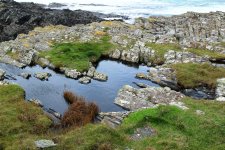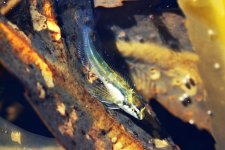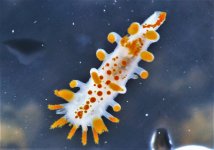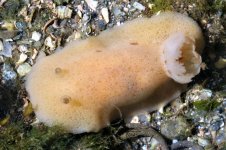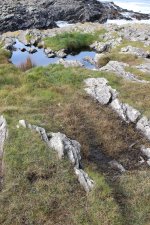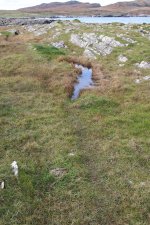In west Scotland these Otters forage in the sea, but since they don't have blubber to keep them warm like seals, they have to keep their fur free of salt so that it retains its insulating properties and doesn't stick together. To do this the Otters climb out of the sea regularly to warm up and often wash themselves in freshwater pools near the sea and since they forage among seaweed beds they accumulate on their fur the same elements that make seaweed a decent fertiliser. When Otters finishing dousing themselves in freshwater they rub themselves on nearby vegetation and these fertilisers rub off and encourage the vegetation to flourish. The intense green patches at the far end of the pool and also close to the camera show this effect nicely.
